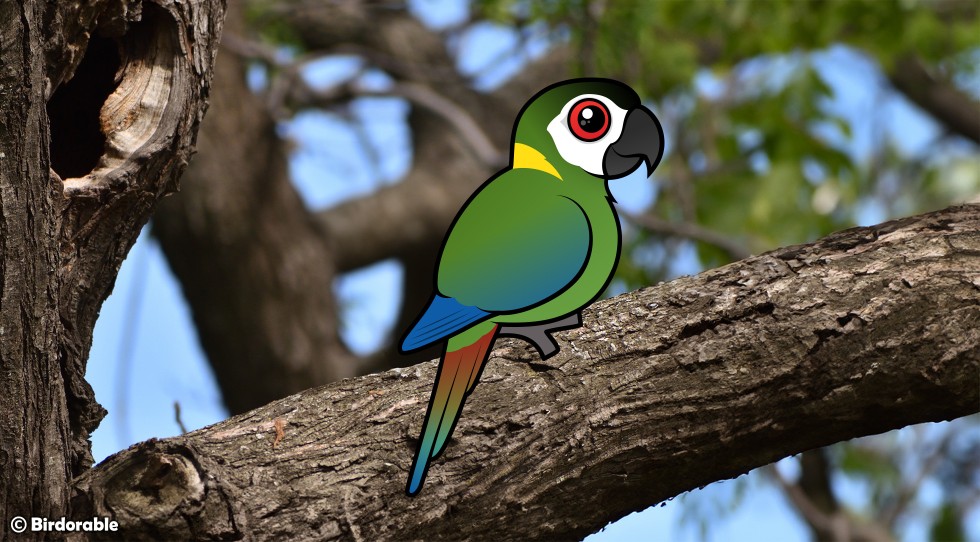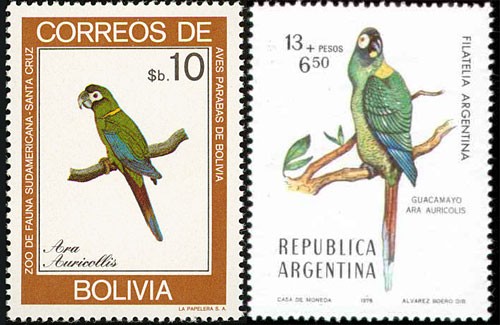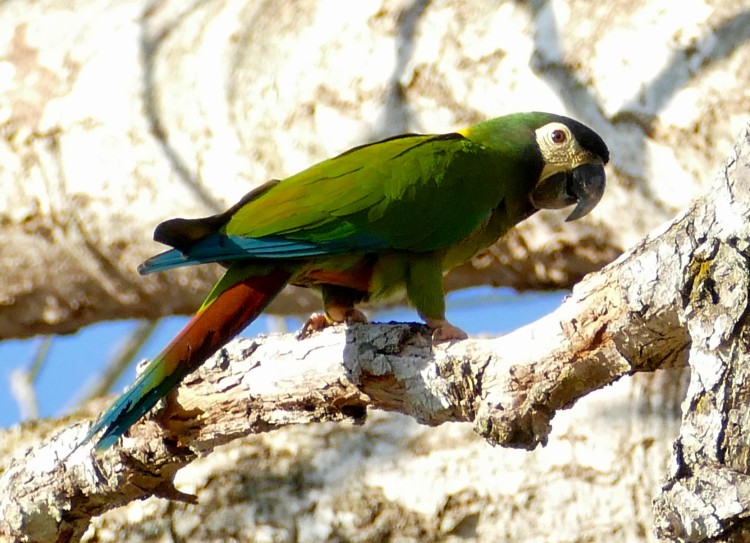Birdorable Welcomes the Golden-collared Macaw: Get to Know It

The Golden-collared Macaw is a small species of macaw found in central South America, particularly in the Pantanal region of Brazil, northern Argentina, northern Paraguay, and much of northern and eastern Bolivia. There's also a separate population in the northeastern areas of Mato Grosso, southeastern Pará, and western Tocantins in Brazil. This bird is known for its bright green plumage, distinctive golden collar, and blue-tipped wings, making it easily recognizable.
Despite its small size compared to other macaws, the Golden-collared Macaw is an important part of its ecosystem, adapting well to a variety of habitats, including wetlands, forests, and savannahs. These habitats are crucial not only for the survival of this species but also for many other forms of wildlife. Conservation efforts are important to maintain these environments and ensure the continued presence of the Golden-collared Macaw in these areas.
The bird has cultural significance as well, featured on stamps in Bolivia and Argentina, which highlights its role in national heritage and the broader effort to raise awareness about wildlife conservation. This kind of recognition can play a part in conservation strategies by fostering a connection between the public and the natural world.

For those interested in birdwatching or the natural sciences, the Golden-collared Macaw offers a fascinating subject of study due to its vibrant colors, behavior, and habitat preferences. Understanding more about this bird can contribute to efforts to protect it and its environment.
In summary, the Golden-collared Macaw is a notable species within its range in South America, valued both for its beauty and its role in the ecosystem. Conservation and awareness are key to ensuring its survival and the health of its habitat.

Golden-collared Macaw at Mato Grosso in Brazi, by Bernard DUPONT (CC BY-SA 2.0 DEED)






Comments
Be the first to comment
Thank you!